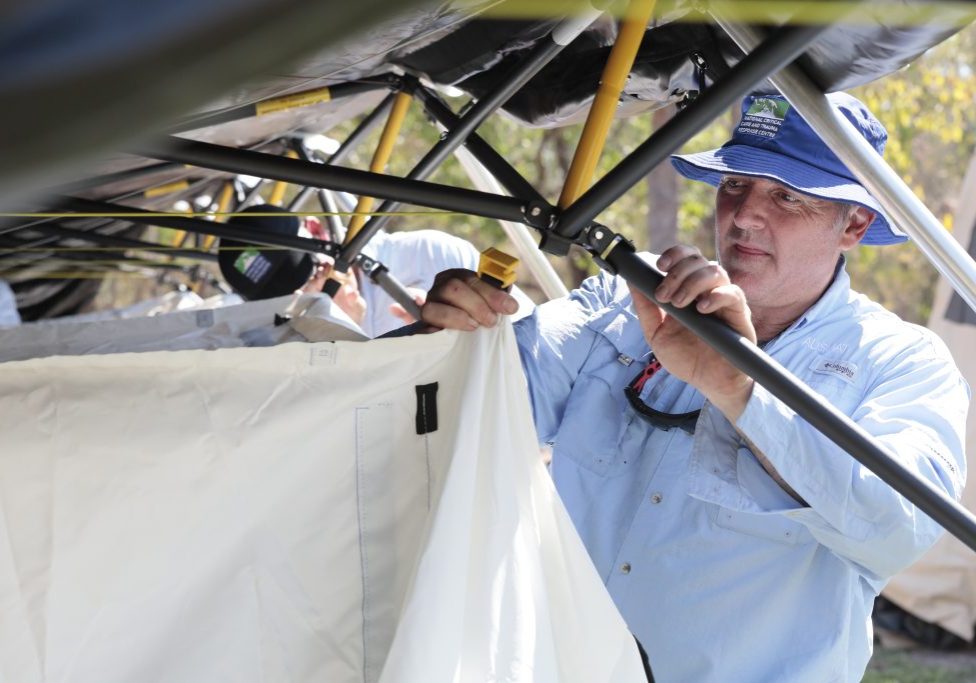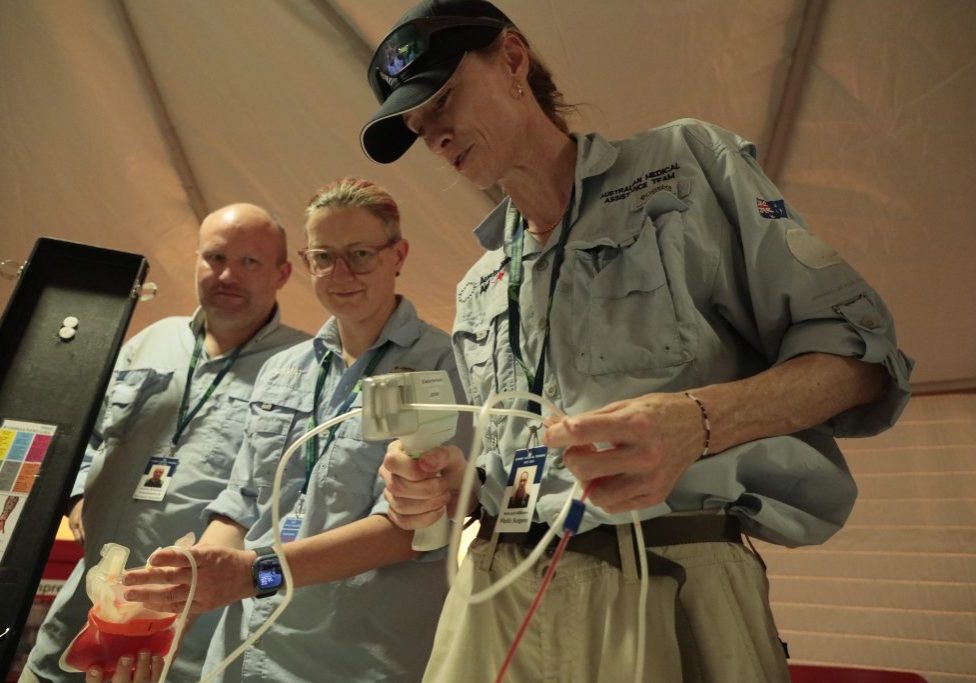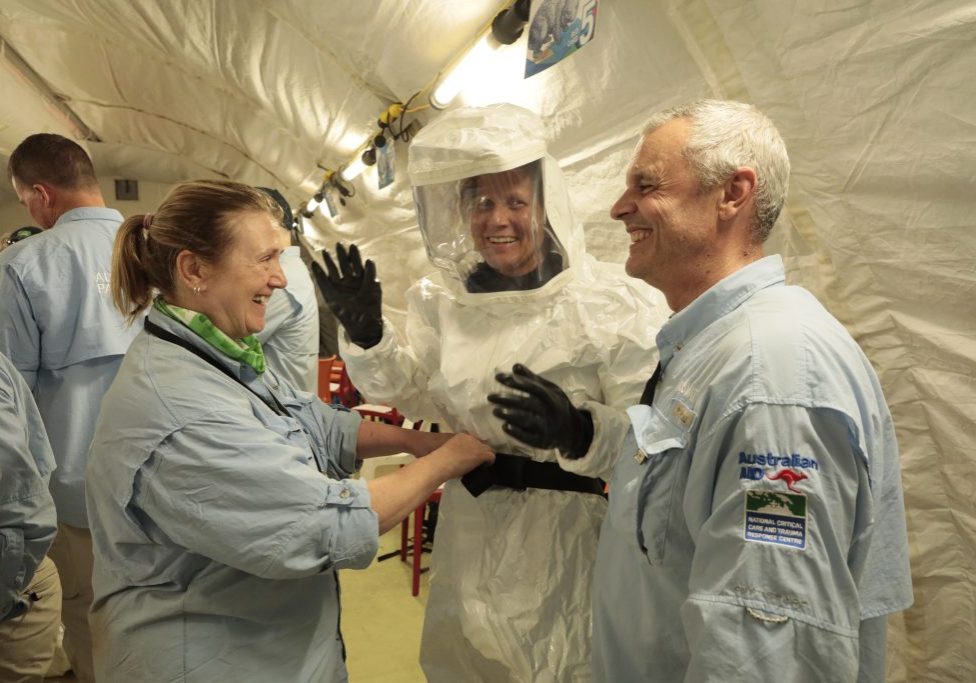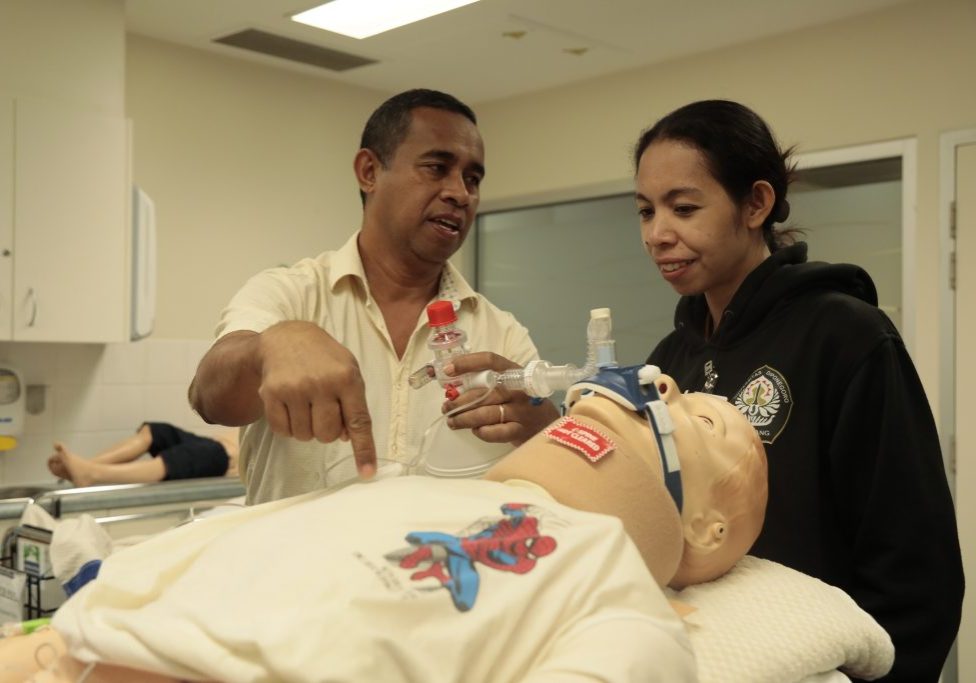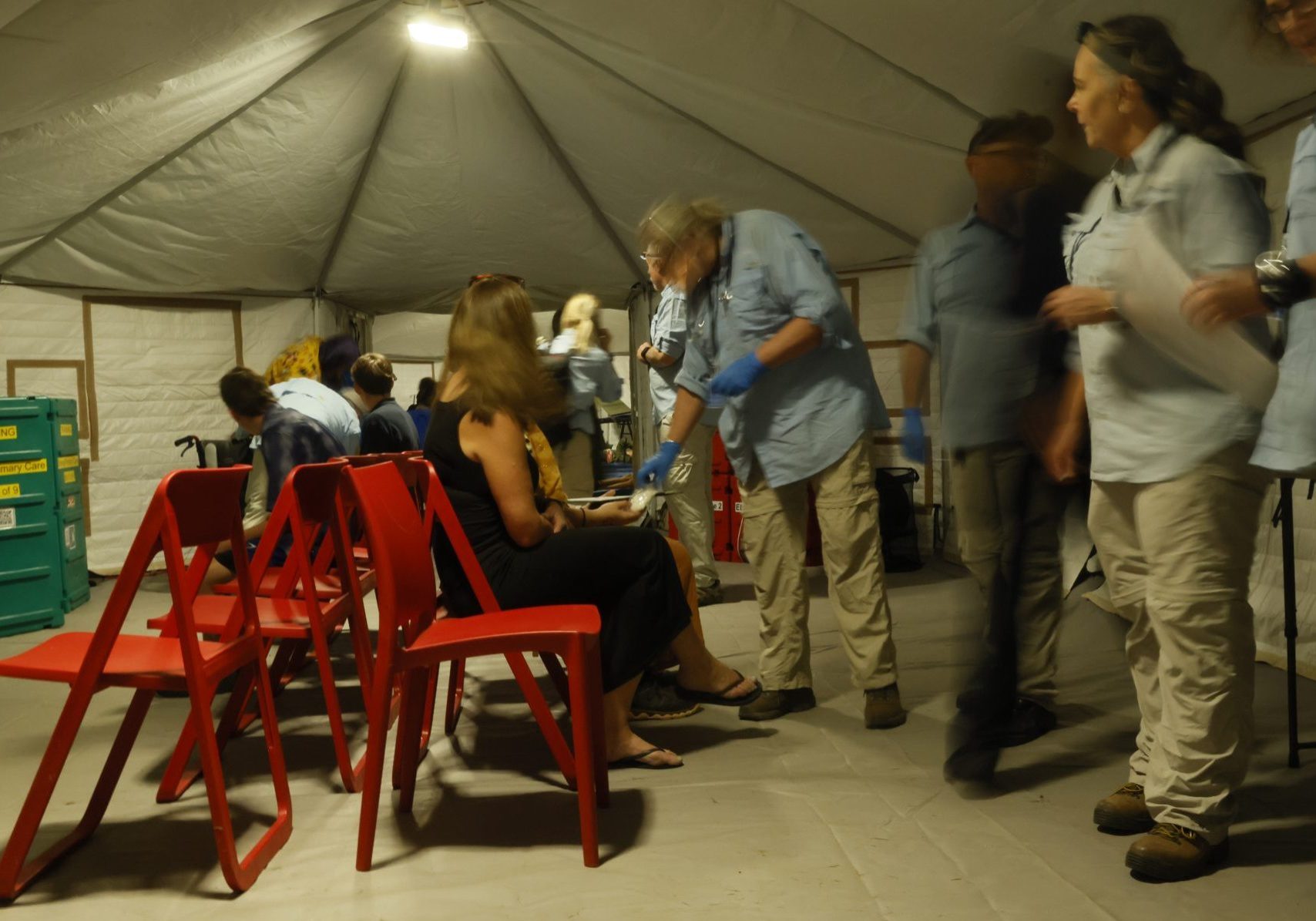AUSMAT Spotlight on Mitchell Bourke: from repairs to recovery in Vanuatu’s earthquake response
18 Mar 2025
Written by Carla Yeung
When a 7.2 magnitude earthquake struck Port Vila, Vanuatu, on 17 December 2024, it caused widespread devastation and prompted a state of emergency. In response, the Australian Government swiftly activated the AUSASSIST Plan, deploying the Australian Medical Assistance Team (AUSMAT) within 36 hours to provide emergency medical support.
AUSMAT teams are made up of specialists from various clinical and logistical backgrounds working together to support local healthcare services. Among them was Mitchell Bourke, part of the Bravo Team, a 17-member Surgical Specialist Cell deployed to Vila Central Hospital (VCH). As AUSMAT's first Biomedical Engineer on deployment, Mitchell played a vital role in getting the hospital’s essential medical equipment back up and running – earning him the title of 'rockstar' among his colleagues.
Mitchell's work focused on testing, repairing, and recalibrating vital biomedical equipment restore hospital operations. “I had a multitude of responsibilities spanning over the two-week period," Mitchell explained.
Working in a post-earthquake environment presented unique challenges. “With local shops closed, communication networks down, and essential supplies either damaged or difficult to find, I had to rely heavily on my problem-solving skills and the resourcefulness of the local hospital staff.” Mitchell recalled. “They used their local knowledge to source parts and information. I had to improvise at times and always be resourceful in using what I could to get the job done.”
His repairs covered a wide range of critical medical equipment, including:
- Industrial oxygen generator and backup oxygen supply manifold
- Tourniquet machines
- Patient monitors
- Infant radiant warmers
One of the most complex tasks was overhauling the oxygen generator and manifold, a critical system for supplying oxygen to patients. “It was a big job, rebuilding the gas regulators, replacing the thermostat and repairing the compressor duct,” Mitchell shared. “But knowing that this work directly impacted the hospital's ability to supply oxygen to patients was incredibly rewarding.” Learn more about AUSMAT’s broader response to the Vanuatu earthquake including the multidisciplinary teams and their coordinated efforts to support healthcare recovery in: United in support: AUSMAT’s response to Vanuatu’s earthquake.

Mitchell's previous experience working in remote Northern Territory communities proved invaluable in Vanuatu. "It taught me to be culturally aware and sensitive, always listening first to fully understand the issue before attempting to resolve it," he noted. This approach was crucial when navigating the complexities of working in a foreign environment with a different healthcare infrastructure. He added, "Being resourceful and resilient, especially in unfamiliar or harsh environments, is something I’ve developed over time, and it was definitely put to the test in Vanuatu."
His first AUSMAT deployment exceeded his expectations. Having completed the AUSMAT Team Member Course just seven months earlier, he was well-prepared for the hands-on nature of the role. "I thought the focus would be more on assessments and audits, but it turned out to be far more hands-on – troubleshooting power or gas issues, and providing technical advice," he said. "But the AUSMAT training prepared me for this – especially the realistic simulations of worst-case scenarios. It helped me feel ready for the deployment, and I was able to navigate the challenges much more smoothly."

Mitchell witnessed firsthand how his work directly improved patient care. "Repairing the oxygen generator ensured a continuous supply of oxygen for patients across the hospital, especially those undergoing surgery, he explained. "Installing patient monitors in the NICU and children’s wards allowed staff to monitor their patients more effectively and safely, which was immensely satisfying."
Beyond the technical challenges, the experience shaped Mitchell’s professional and personal. "Being resourceful and seeking local knowledge became key takeaways from this deployment," he said. "It really reinforced how important it is to listen, understand, and approach each situation with the flexibility to adjust to new challenges."
Mitchell’s contributions left such a strong impression on the VCH staff that, shortly after his return to Darwin, he was approached to take up a position with the hospital – a testament to his expertise and dedication, and a reminder that sometimes a mission can lead to an unexpected new adventure.


